
Transferring Indicators from MQL4 to MQL5
Introduction
Hello dear readers!
In today's article I'm going to represent you an algorithm of transferring simple price calculations from MQL4 to MQL5. With a glance to the difference between MQL5 and MQL4 I added the library of functions mql4_2_mql5.mqh; we will learn how to use it after reading this article.
1. Preparing an Indicator for Transferring
This article is about transferring indicator calculations only; if an indicator contains graphical elements or more complex price calculations, you will encounter difficulties with it.
First of all, we need to prepare an MQL4 code for transferring. Let's take a look at what we need for it.
Open MetaEditor 4 with a necessary indicator, for example, MACD; and start modifying its input parameters:
//---- indicator parameters extern int FastEMA=12; extern int SlowEMA=26; extern int SignalSMA=9; //---- indicator buffers double MacdBuffer[]; double SignalBuffer[];
We need to bring it all to the following state:
double &MacdBuffer[],double &SignalBuffer[],int FastEMA,int SlowEMA,int SignalSMA
At the beginning of the line the buffers of indicators are specified together with the & symbols before their names. The reason is that we need to pass the links to the array where all the changes will be performed, but not the array itself!!!
Then come the input parameters. In our MQL4 indicator change the following line:
int start()to
int start(int rates_total, int prev_calculated, double &MacdBuffer[], double &SignalBuffer[], int FastEMA, int SlowEMA, int SignalSMA)
As you see, two more obligatory elements are added:
int rates_total, int prev_calculated,
The next part is the line that we previously formed.
Now copy the whole section to the last symbol.
//+------------------------------------------------------------------+ //| Moving Averages Convergence/Divergence | //+------------------------------------------------------------------+ int start(int rates_total ,int prev_calculated ,double &MacdBuffer[] ,double &SignalBuffer[] ,int FastEMA ,int SlowEMA ,int SignalSMA) { int limit; int counted_bars=IndicatorCounted(); //---- last counted bar will be recounted if(counted_bars>0) counted_bars--; limit=Bars-counted_bars; //---- macd counted in the 1-st buffer for(int i=0; i<limit; i++) MacdBuffer[i]=iMA(NULL,0,FastEMA,0,MODE_EMA,PRICE_CLOSE,i) -iMA(NULL,0,SlowEMA,0,MODE_EMA,PRICE_CLOSE,i); //---- signal line counted in the 2-nd buffer for(i=0; i<limit; i++) SignalBuffer[i]=iMAOnArray(MacdBuffer,Bars,SignalSMA,0,MODE_SMA,i); //---- done return(0); } //+------------------------------------------------------------------
2. Creating an MQL5 Template for MQL4 Programs
Now we need to prepare the environment for our section.
To do it, select the "New" item of the menu in MetaEditor 5, then select "Custom indicator".
Create input parameters (fig. 1) according to the input parameters of the MQL4 indicator:
//---- indicator parameters extern int FastEMA=12; extern int SlowEMA=26; extern int SignalSMA=9;
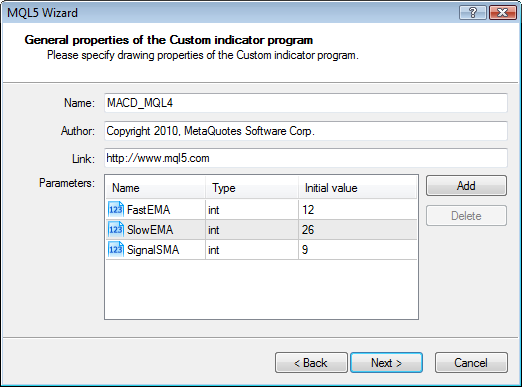
Figure 1. Input parameters of the MACD indicator
Then create indicator buffers (fig. 2) according to what is written about them in the MQL4 program:
//---- indicator buffers double MacdBuffer[]; double SignalBuffer[];

Figure 2. The indicator buffers of MACD
Now we have formed a template for our new indicator.
You need to make several modifications to it. Add a line above the input parameters:
#include <mql4_2_mql5.mqh> //--- input parameters
To the function:
int OnInit()
add the line
InitMql4();and add a line that is responsible for starting the environment for the MQL4 program to the body of the program:
int bars=MQL4Run(rates_total,prev_calculated); // bars - number of bars available to MQL4 programs
As you can see, this function will return number of bars available for the MQL4 environment; a new variable appears here as well:
int CountedMQL4;This variable is an analog of the MQL5 variable
prev_calculated,
The CountedMQL4 variable is declared in the included file; it passes the amount of calculated data.
Then insert our prepared MQL4 section into the formed MQL5 template after the last symbol.
Now we need to start the indicator.
To do it, add the following line to the body of the program:
Start(bars,
CountedMQL4,
MacdBuffer,
SignalBuffer,
FastEMA,
SlowEMA,
SignalSMA);As you see, this line will pass data, that is necessary for our MQL4 program, as well as the links to resulting buffers, which names we will take from the template created in MQL5.
The following result should be obtained:
//+------------------------------------------------------------------+ //| MACD_MQ4.mq5 | //| Copyright 2010, MetaQuotes Software Corp. | //| http://www.mql5.com | //+------------------------------------------------------------------+ #property copyright "Copyright 2010, MetaQuotes Software Corp." #property link "http://www.mql5.com" #property version "1.00" #property indicator_separate_window #property indicator_buffers 2 #property indicator_plots 2 //--- plot MacdBuffer #property indicator_label1 "MacdBuffer" #property indicator_type1 DRAW_LINE #property indicator_color1 Red #property indicator_style1 STYLE_SOLID #property indicator_width1 1 //--- plot SignalBuffer #property indicator_label2 "SignalBuffer" #property indicator_type2 DRAW_LINE #property indicator_color2 Red #property indicator_style2 STYLE_SOLID #property indicator_width2 1 //--- input parameters #include <mql4_2_mql5.mqh> input int FastEMA=12; input int SlowEMA=26; input int SignalSMA=9; //--- indicator buffers double MacdBuffer[]; double SignalBuffer[]; //+------------------------------------------------------------------+ //| Custom indicator initialization function | //+------------------------------------------------------------------+ int OnInit() { //--- indicator buffers mapping SetIndexBuffer(0,MacdBuffer,INDICATOR_DATA); SetIndexBuffer(1,SignalBuffer,INDICATOR_DATA); //--- InitMql4(); //--- return(0); } //+------------------------------------------------------------------+ //| Custom indicator iteration function | //+------------------------------------------------------------------+ int OnCalculate(const int rates_total, const int prev_calculated, const datetime& time[], const double& open[], const double& high[], const double& low[], const double& close[], const long& tick_volume[], const long& volume[], const int& spread[]) { //--- int bars=MQL4Run(rates_total,prev_calculated); // bars - number of bars available to MQL4 programs Start(bars, CountedMQL4, MacdBuffer, SignalBuffer, FastEMA, SlowEMA, SignalSMA);//--- return value of prev_calculated for next call return(rates_total); } //+------------------------------------------------------------------+ //| Moving Averages Convergence/Divergence | //+------------------------------------------------------------------+ int Start(int rates_total, int prev_calculated, double &MacdBuffer[], double &SignalBuffer[], int FastEMA, int SlowEMA, int SignalSMA) { int limit; int counted_bars=IndicatorCounted(); //---- last counted bar will be recounted if(counted_bars>0) counted_bars--; limit=Bars-counted_bars; //---- macd counted in the 1-st buffer for(int i=0; i<limit; i++) MacdBuffer[i]=iMA(NULL,0,FastEMA,0,MODE_EMA,PRICE_CLOSE,i) -iMA(NULL,0,SlowEMA,0,MODE_EMA,PRICE_CLOSE,i); //---- signal line counted in the 2-nd buffer for(i=0; i<limit; i++) SignalBuffer[i]=iMAOnArray(MacdBuffer,Bars,SignalSMA,0,MODE_SMA,i); //---- done return(0); }
This is just the first stage of the transfer; now we start debugging the indicator.
3. Peculiarities of Working with Indicator Buffers in MQL5
Since many predefined variables of MQL4 correspond to the names of predefined variables of MQL5, you should make the following changes to the transferred MQL4 section:
| MQL4 | MQL5 |
|---|---|
| IndicatorCounted() | prev_calculated |
| Bars | rates_total |
| iMA( | iMAMql4( |
| iMAOnArray( | iMAOnArrayMql4( |
//+--------------------+------------------+ //| MQL4 | MQL5 | //+--------------------+------------------+ //|IndicatorCounted() | prev_calculated | //| Bars | rates_total | //| iMA( | iMAMql4( | //| iMAOnArray( | iMAOnArrayMql4( | //+--------------------+------------------+
Regarding the peculiarities of organization of data storage, the MQL5 reference says the following about SetIndexBuffer():
Note
After binding, the dynamic array buffer[] will be indexed as in common arrays, even if the indexing of timeseries is pre-installed for the bound array . If you want to change the order of access to elements of the indicator array, use the ArraySetAsSeries() function after binding the array using the SetIndexBuffer() function.
Thus, the initial policy of accessing indicator buffers now corresponds to working with ordinary arrays, so you should always add the binding:
ArraySetAsSeries(MacdBuffer,true); ArraySetAsSeries(SignalBuffer,true);
The resultant code is the following:
//+------------------------------------------------------------------+ //| MACD_MQL4.mq5 | //| Copyright 2010, MetaQuotes Software Corp. | //| http://www.mql5.com | //+------------------------------------------------------------------+ #property copyright "Copyright 2010, MetaQuotes Software Corp." #property link "http://www.mql5.com" #property version "1.00" #property indicator_separate_window #property indicator_buffers 2 #property indicator_plots 2 //--- plot MacdBuffer #property indicator_label1 "MacdBuffer" #property indicator_type1 DRAW_LINE #property indicator_color1 Red #property indicator_style1 STYLE_SOLID #property indicator_width1 1 //--- plot SignalBuffer #property indicator_label2 "SignalBuffer" #property indicator_type2 DRAW_LINE #property indicator_color2 Red #property indicator_style2 STYLE_SOLID #property indicator_width2 1 #include <mql4_2_mql5.mqh> //--- input parameters input int FastEMA=12; input int SlowEMA=26; input int SignalSMA=9; //--- indicator buffers double MacdBuffer[]; double SignalBuffer[]; //+------------------------------------------------------------------+ //| Custom indicator initialization function | //+------------------------------------------------------------------+ int OnInit() { //--- indicator buffers mapping SetIndexBuffer(0,MacdBuffer,INDICATOR_DATA); SetIndexBuffer(1,SignalBuffer,INDICATOR_DATA); //--- InitMql4(); //--- ArraySetAsSeries(MacdBuffer,true); ArraySetAsSeries(SignalBuffer,true); //--- return(0); } //+------------------------------------------------------------------+ //| Custom indicator iteration function | //+------------------------------------------------------------------+ int OnCalculate(const int rates_total, const int prev_calculated, const datetime &time[], const double &open[], const double &high[], const double &low[], const double &close[], const long &tick_volume[], const long &volume[], const int &spread[]) { //--- int bars=MQL4Run(rates_total,prev_calculated); // bars - number of bars available for MQL4 programs Start(bars, CountedMQL4, MacdBuffer, SignalBuffer, FastEMA, SlowEMA, SignalSMA); //--- return value of prev_calculated for next call return(rates_total); } //+------------------------------------------------------------------+ //| Moving Averages Convergence/Divergence | //+------------------------------------------------------------------+ //+--------------------+------------------+ //| MQL4 | MQL5 | //+--------------------+------------------+ //|IndicatorCounted() | prev_calculated | //| Bars | rates_total | //| iMA( | iMAMql4( | //| iMAOnArray( | iMAOnArrayMql4( | //+--------------------+------------------+ int Start(int rates_total, int prev_calculated, double &MacdBuffer[], double &SignalBuffer[], int FastEMA, int SlowEMA, int SignalSMA) { int limit; int counted_bars=prev_calculated; //---- last counted bar will be recounted if(counted_bars>0) counted_bars--; limit=rates_total-counted_bars; //---- macd counted in the 1-st buffer for(int i=0; i<limit; i++) MacdBuffer[i]=iMAMql4(NULL,0,FastEMA,0,MODE_EMA,PRICE_CLOSE,i) -iMAMql4(NULL,0,SlowEMA,0,MODE_EMA,PRICE_CLOSE,i); //---- signal line counted in the 2-nd buffer for(int i=0; i<limit; i++) SignalBuffer[i]=iMAOnArrayMql4(MacdBuffer,rates_total,SignalSMA,0,MODE_SMA,i); //---- done return(0); } //+------------------------------------------------------------------+
The result of execution is shown in the fig. 3:
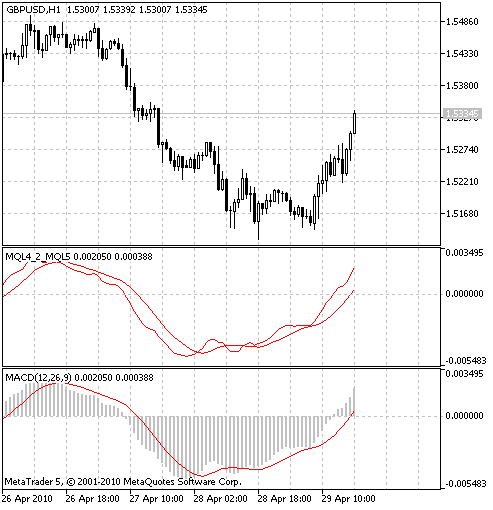
Figure 3. Comparison of the MACD indicator rewritten from MQL4 and the standard one in MQL5.
4. Example of Transferring the Stochastic Indicator
Let's create a new template for our indicator in MetaEditor 5 (fig. 4-5):

Figure 4. Input parameters

Figure 5. Buffers
During debugging we figured out that several calculations from the MQL4 "OnInit" function should be moved inside the "Start" function by simple copying:
int draw_begin1=KPeriod+Slowing; int draw_begin2=draw_begin1+DPeriod;Also we need to change the number of buffers for drawing since in our MQL4 program 2 buffers are used for internal calculations and another 2 are used for drawing.
#property indicator_plots 2And change the status of buffers that will be used by our MQL4 program for internal calculations.
SetIndexBuffer(2,HighesBuffer,INDICATOR_CALCULATIONS); SetIndexBuffer(3,LowesBuffer,INDICATOR_CALCULATIONS);Make the necessary changes:
//+------------------------------------------------------------------+ //| Stochastic_MQL4.mq5 | //| Copyright 2010, MetaQuotes Software Corp. | //| http://www.mql5.com | //+------------------------------------------------------------------+ #property copyright "Copyright 2010, MetaQuotes Software Corp." #property link "http://www.mql5.com" #property version "1.00" #property indicator_separate_window #property indicator_minimum 0 #property indicator_maximum 100 #property indicator_buffers 4 #property indicator_plots 2 //--- plot MainBuffer #property indicator_label1 "MainBuffer" #property indicator_type1 DRAW_LINE #property indicator_color1 Red #property indicator_style1 STYLE_SOLID #property indicator_width1 1 //--- plot SignalBuffer #property indicator_label2 "SignalBuffer" #property indicator_type2 DRAW_LINE #property indicator_color2 Red #property indicator_style2 STYLE_SOLID #property indicator_width2 1 #include <mql4_2_mql5.mqh> //--- input parameters input int Kperiod=14; input int Dperiod=5; input int Slowing=5; //--- indicator buffers double MainBuffer[]; double SignalBuffer[]; double HighesBuffer[]; double LowesBuffer[]; //+------------------------------------------------------------------+ //| Custom indicator initialization function | //+------------------------------------------------------------------+ int OnInit() { //--- indicator buffers mapping SetIndexBuffer(0,MainBuffer,INDICATOR_DATA); SetIndexBuffer(1,SignalBuffer,INDICATOR_DATA); SetIndexBuffer(2,HighesBuffer,INDICATOR_CALCULATIONS); SetIndexBuffer(3,LowesBuffer,INDICATOR_CALCULATIONS); //--- InitMql4(); //--- ArraySetAsSeries(MainBuffer,true); ArraySetAsSeries(SignalBuffer,true); ArraySetAsSeries(HighesBuffer,true); ArraySetAsSeries(LowesBuffer,true); //--- return(0); } //+------------------------------------------------------------------+ //| Custom indicator iteration function | //+------------------------------------------------------------------+ int OnCalculate(const int rates_total, const int prev_calculated, const datetime &time[], const double &open[], const double &high[], const double &low[], const double &close[], const long &tick_volume[], const long &volume[], const int &spread[]) { //--- int bars=MQL4Run(rates_total,prev_calculated); // bars - количество баров, доступных mql4-программам start(bars, CountedMQL4, MainBuffer, SignalBuffer, HighesBuffer, LowesBuffer, Kperiod, Dperiod, Slowing); //--- return value of prev_calculated for next call return(rates_total); } //+--------------------+------------------+ //| MQL4 | MQL5 | //+--------------------+------------------+ //|IndicatorCounted() | prev_calculated | //| Bars | rates_total | //| iMA( | iMAMql4( | //| iMAOnArray( | iMAOnArrayMql4( | //+--------------------+------------------+ int start(int rates_total, int prev_calculated, double &MainBuffer[], double &SignalBuffer[], double &HighesBuffer[], double &LowesBuffer[], int KPeriod, int DPeriod, int Slowing) { int draw_begin1=KPeriod+Slowing; int draw_begin2=draw_begin1+DPeriod; int i,k; int counted_bars=prev_calculated; double price; //---- if(rates_total<=draw_begin2) return(0); //---- initial zero if(counted_bars<1) { for(i=1;i<=draw_begin1;i++) MainBuffer[rates_total-i]=0; for(i=1;i<=draw_begin2;i++) SignalBuffer[rates_total-i]=0; } //---- minimums counting i=rates_total-KPeriod; if(counted_bars>KPeriod) i=rates_total-counted_bars-1; while(i>=0) { double min=1000000; k=i+KPeriod-1; while(k>=i) { price=Low[k]; if(min>price) min=price; k--; } LowesBuffer[i]=min; i--; } //---- maximums counting i=rates_total-KPeriod; if(counted_bars>KPeriod) i=rates_total-counted_bars-1; while(i>=0) { double max=-1000000; k=i+KPeriod-1; while(k>=i) { price=High[k]; if(max<price) max=price; k--; } HighesBuffer[i]=max; i--; } //---- %K line i=rates_total-draw_begin1; if(counted_bars>draw_begin1) i=rates_total-counted_bars-1; while(i>=0) { double sumlow=0.0; double sumhigh=0.0; for(k=(i+Slowing-1);k>=i;k--) { sumlow+=Close[k]-LowesBuffer[k]; sumhigh+=HighesBuffer[k]-LowesBuffer[k]; } if(sumhigh==0.0) MainBuffer[i]=100.0; else MainBuffer[i]=sumlow/sumhigh*100; i--; } //---- last counted bar will be recounted if(counted_bars>0) counted_bars--; int limit=rates_total-counted_bars; //---- signal line is simple moving average for(i=0; i<limit; i++) SignalBuffer[i]=iMAOnArrayMql4(MainBuffer,rates_total,DPeriod,0,MODE_SMA,i); //---- return(0); } //+------------------------------------------------------------------+
As a result we obtained a full-fledged stochastic in MQL5 with the MQL4 price constructions.
The result of its working is shown in the fig. 6:

Figure 6. Comparison of the indicator Stochastic rewritten from MQL4 and the standard Stochastic in MQL5.
5. Example of Transferring the RSI Indicator
Gather information about our indicator://---- input parameters extern int RSIPeriod=14; //---- buffers double RSIBuffer[]; double PosBuffer[]; double NegBuffer[];
And create a template for it in MetaEditor 5 (fig. 7-8).

Figure 7. Input parameter of the RSI indicator

Figure 8. Buffers of the RSI indicator
Total number of buffers is 3:
#property indicator_buffers 3Number of buffers for plotting is equal to one:
#property indicator_plots 1Set the status of buffers for calculations:
SetIndexBuffer(1,PosBuffer,INDICATOR_CALCULATIONS); SetIndexBuffer(2,NegBuffer,INDICATOR_CALCULATIONS)
Arrange the parts and make necessary changes:
//+------------------------------------------------------------------+ //| RSI_MQL4.mq5 | //| Copyright 2010, MetaQuotes Software Corp. | //| http://www.mql5.com | //+------------------------------------------------------------------+ #property copyright "Copyright 2010, MetaQuotes Software Corp." #property link "http://www.mql5.com" #property version "1.00" #property indicator_separate_window #property indicator_buffers 3 #property indicator_plots 1 //--- plot RSIBuffer #property indicator_label1 "RSIBuffer" #property indicator_type1 DRAW_LINE #property indicator_color1 Green #property indicator_style1 STYLE_SOLID #property indicator_width1 1 //--- plot PosBuffer #property indicator_label2 "PosBuffer" #property indicator_type2 DRAW_LINE #property indicator_color2 Red #property indicator_style2 STYLE_SOLID #property indicator_width2 1 //--- plot NegBuffer #property indicator_label3 "NegBuffer" #property indicator_type3 DRAW_LINE #property indicator_color3 Red #property indicator_style3 STYLE_SOLID #property indicator_width3 1 #include <mql4_2_mql5.mqh> //--- input parameters input int RSIPeriod=14; //--- indicator buffers double RSIBuffer[]; double PosBuffer[]; double NegBuffer[]; //+------------------------------------------------------------------+ //| Custom indicator initialization function | //+------------------------------------------------------------------+ int OnInit() { //--- indicator buffers mapping SetIndexBuffer(0,RSIBuffer,INDICATOR_DATA); SetIndexBuffer(1,PosBuffer,INDICATOR_CALCULATIONS); SetIndexBuffer(2,NegBuffer,INDICATOR_CALCULATIONS); //--- InitMql4(3); ArraySetAsSeries(RSIBuffer,true); ArraySetAsSeries(PosBuffer,true); ArraySetAsSeries(NegBuffer,true); return(0); } //+------------------------------------------------------------------+ //| Custom indicator iteration function | //+------------------------------------------------------------------+ int OnCalculate(const int rates_total, const int prev_calculated, const datetime &time[], const double &open[], const double &high[], const double &low[], const double &close[], const long &tick_volume[], const long &volume[], const int &spread[]) { int bars=MQL4Run(rates_total,prev_calculated); // bars - number of bars available for MQL4 programs RSImql4(bars, CountedMQL4, RSIBuffer, PosBuffer, NegBuffer, RSIPeriod); return(rates_total); } //+--------------------+------------------+ //| MQL4 | MQL5 | //+--------------------+------------------+ //|IndicatorCounted() | prev_calculated | //| Bars | rates_total | //| iMA( | iMAMql4( | //| iMAOnArray( | iMAOnArrayMql4( | //+--------------------+------------------+ int RSImql4(int rates_total, int prev_calculated, double &RSIBuffer[], double &PosBuffer[], double &NegBuffer[], int RSIPeriod) { int i,counted_bars=prev_calculated; double rel,negative,positive; //----fd if(rates_total<=RSIPeriod) return(0); //---- initial zero if(counted_bars<1) for(i=1;i<=RSIPeriod;i++) RSIBuffer[rates_total-i]=0.0; //---- i=rates_total-RSIPeriod-1; if(counted_bars>=RSIPeriod) i=rates_total-counted_bars-1; while(i>=0) { double sumn=0.0,sump=0.0; if(i==rates_total-RSIPeriod-1) { int k=rates_total-2; //---- initial accumulation while(k>=i) { rel=Close[k]-Close[k+1]; if(rel>0) sump+=rel; else sumn-=rel; k--; } positive=sump/RSIPeriod; negative=sumn/RSIPeriod; } else { //---- smoothed moving average rel=Close[i]-Close[i+1]; if(rel>0) sump=rel; else sumn=-rel; positive=(PosBuffer[i+1]*(RSIPeriod-1)+sump)/RSIPeriod; negative=(NegBuffer[i+1]*(RSIPeriod-1)+sumn)/RSIPeriod; } PosBuffer[i]=positive; NegBuffer[i]=negative; if(negative==0.0) RSIBuffer[i]=0.0; else RSIBuffer[i]=100.0-100.0/(1+positive/negative); i--; } //---- return(0); } //+------------------------------------------------------------------+
Here, unlike in the previous indicator, we changed the name: now instead of the usual int Start() function in MQL4
int start()
{we use
int RSImql4(in MQL5. Both the name of the function itself and the line where it is called in the MQL5 program are changed.
The result of working of the library is shown in the fig. 9.
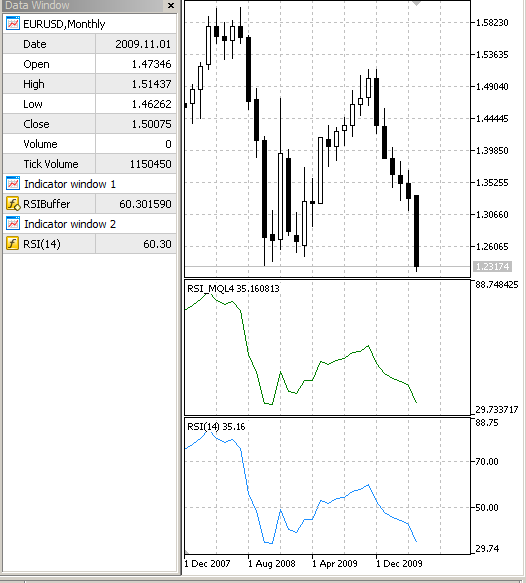
Figure 9. Comparison of the RSIc indicator rewritten from MQL4 and the standard RSI indicator in MQL5.
6. Setup
To setup this module, you need to copy the mql4_2_mql5.mqh file to the MQL5\Include\ folder.
Test files should be placed to the MQL5\Indicators folder.
7. Improvement
If you want, you can extend the functionality of the module by connecting a library from the Migrating from MQL4 to MQL5 article. Add the InitMQL4.mqh file to the MQL5\Include folder and the following lines before the input parameters:
#include <InitMQL4.mqh>You can get acquainted with the list of necessary changes in the Migrating from MQL4 to MQL5 article.
Conclusion
The algorithm of transferring simple price constructions from MQL4 to MQL5 using the special mql4_2_mql5.mqh library is represented in this article.
During debugging you may experience little troubles, but for the ones who are familiar with MQL4 it won't be a problem to cope with them.
Considering the peculiarities of accessing data in the MQL5 environment, recalculation of indicators may take some time. The reason is that we have to create and recalculate necessary data for programs from the MQL4 environment. For a full-fledged transfer of an indicator to the MQL5 environment it should be rewritten considering the peculiarities of storing and accessing data in MQL5.
Post Scriptum
I want to draw your attention to the phrase "Considering the peculiarities of accessing data in the MQL5 environment, recalculation of indicators may take some time. The reason is that we have to create and recalculate necessary data for programs from the MQL4 environment." Sometimes this waiting may last for several seconds (see fig. 10-11):

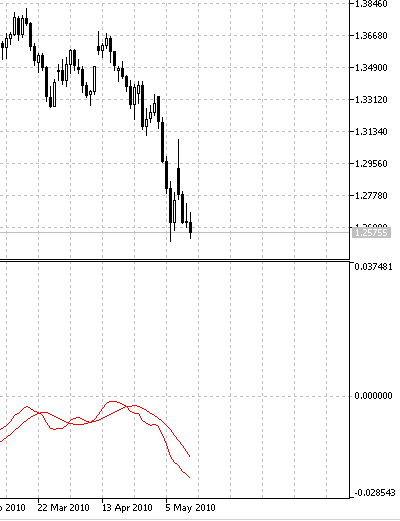
Figure 10. Data is not calculated Figure 11. Data is available
It is connected to a feature of the client terminal - only one copy of the calculation part is created in the cache of the terminal at creating handle of an indicator. If such indicator (with the same input parameters) is not created yet (), the call of the
iMA(Symb,TimFram,iMAPeriod,ma_shift,ma_method,applied_price);function will create a moving average indicator; but only once.
Next time, at an attempt to create an already existing indicator, the terminal will just return its handle.
Thus, calculation of an indicator is performed only once, and not right after creation of its handle.
Translated from Russian by MetaQuotes Ltd.
Original article: https://www.mql5.com/ru/articles/66
Warning: All rights to these materials are reserved by MetaQuotes Ltd. Copying or reprinting of these materials in whole or in part is prohibited.
This article was written by a user of the site and reflects their personal views. MetaQuotes Ltd is not responsible for the accuracy of the information presented, nor for any consequences resulting from the use of the solutions, strategies or recommendations described.
 Creating and Publishing of Trade Reports and SMS Notification
Creating and Publishing of Trade Reports and SMS Notification
 The Optimal Method for Calculation of Total Position Volume by Specified Magic Number
The Optimal Method for Calculation of Total Position Volume by Specified Magic Number
 Creating Multi-Colored Indicators in MQL5
Creating Multi-Colored Indicators in MQL5
- Free trading apps
- Over 8,000 signals for copying
- Economic news for exploring financial markets
You agree to website policy and terms of use
Probably a misprint:
int CountedMQL4;
this variable is an analogue of the mql4 variable
prev_calculated,
should be read as an analogue of mql5-variable
unfortunately downloaded exampled don't work (i though i was doing something wrong so i just downloaded whole examples). Indicator presents empty window.
you can it esay Zigzag it have mql4 can Covert to mt5?
it Zigzag Show next High TF for example it Chart H4 Tf but show Zigzag Daily to left h4
file Sorce Attachemt
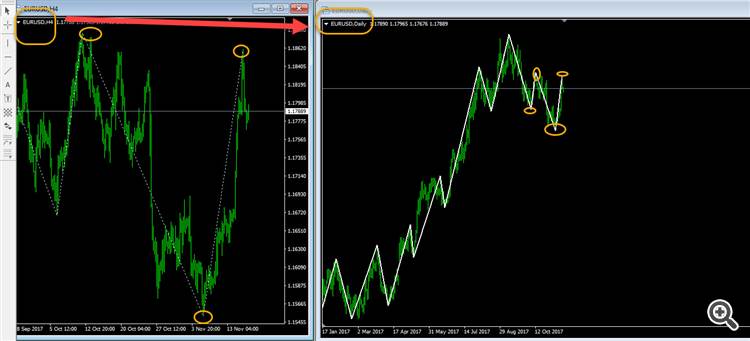
Thanks